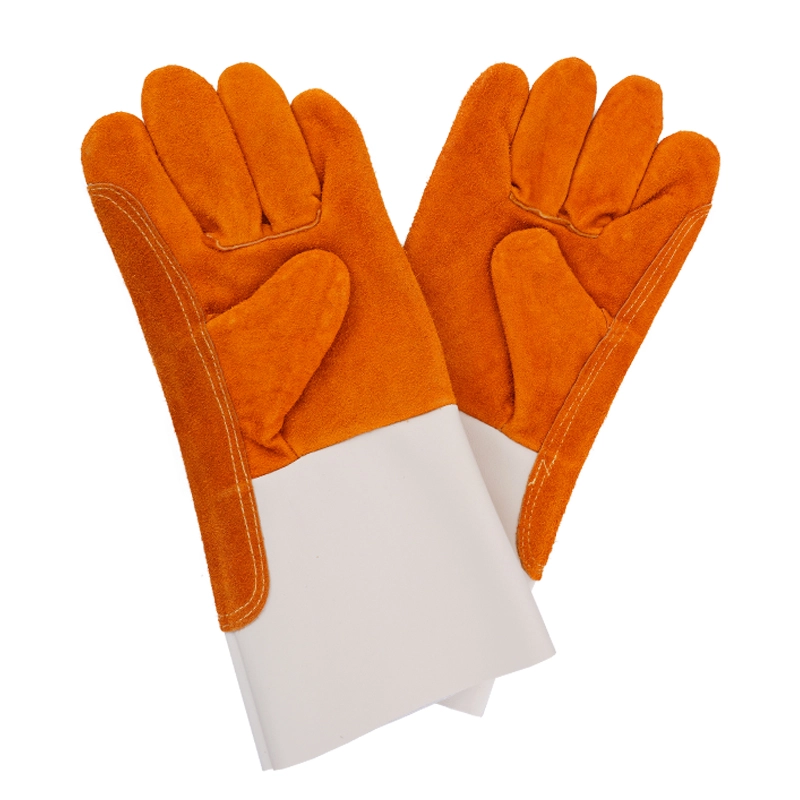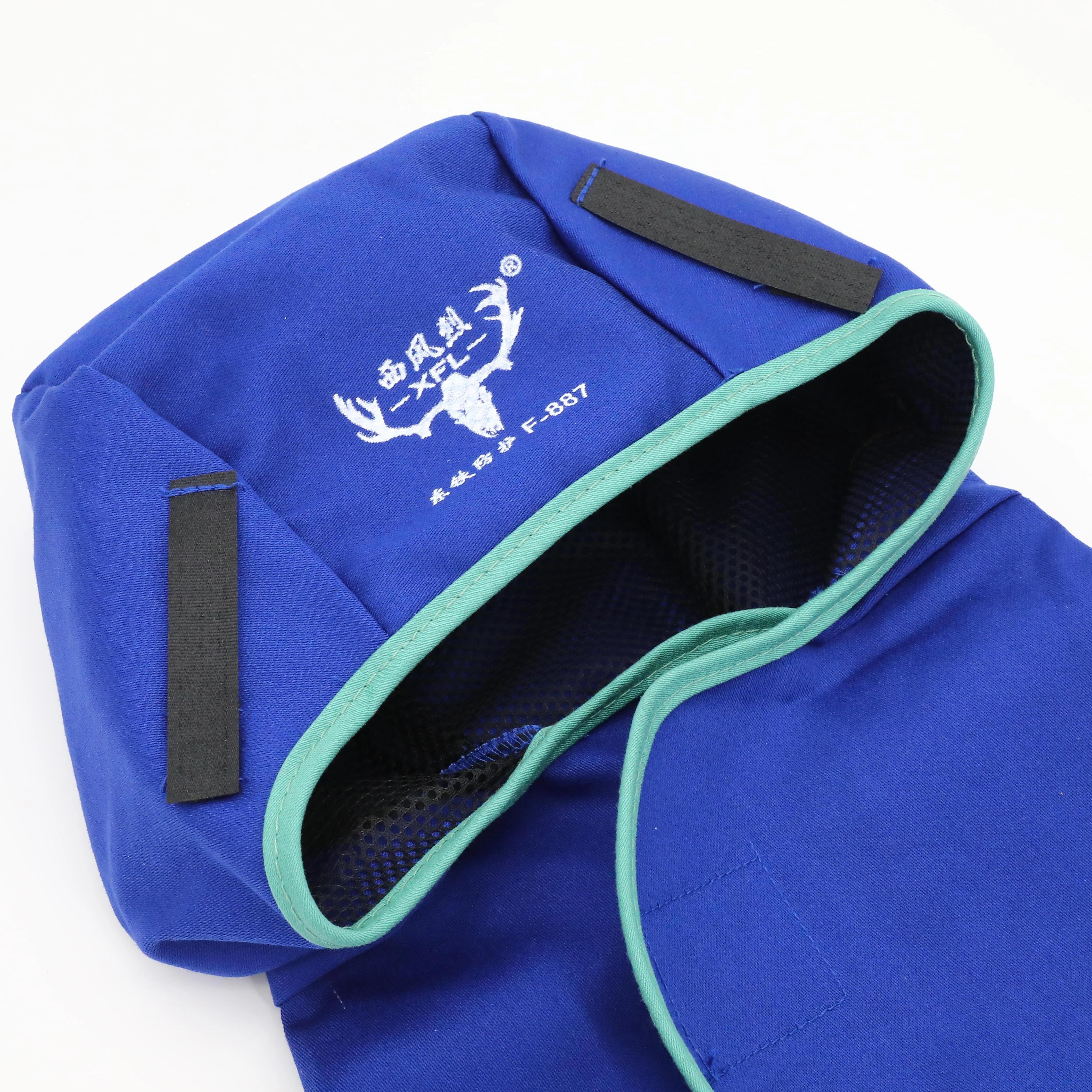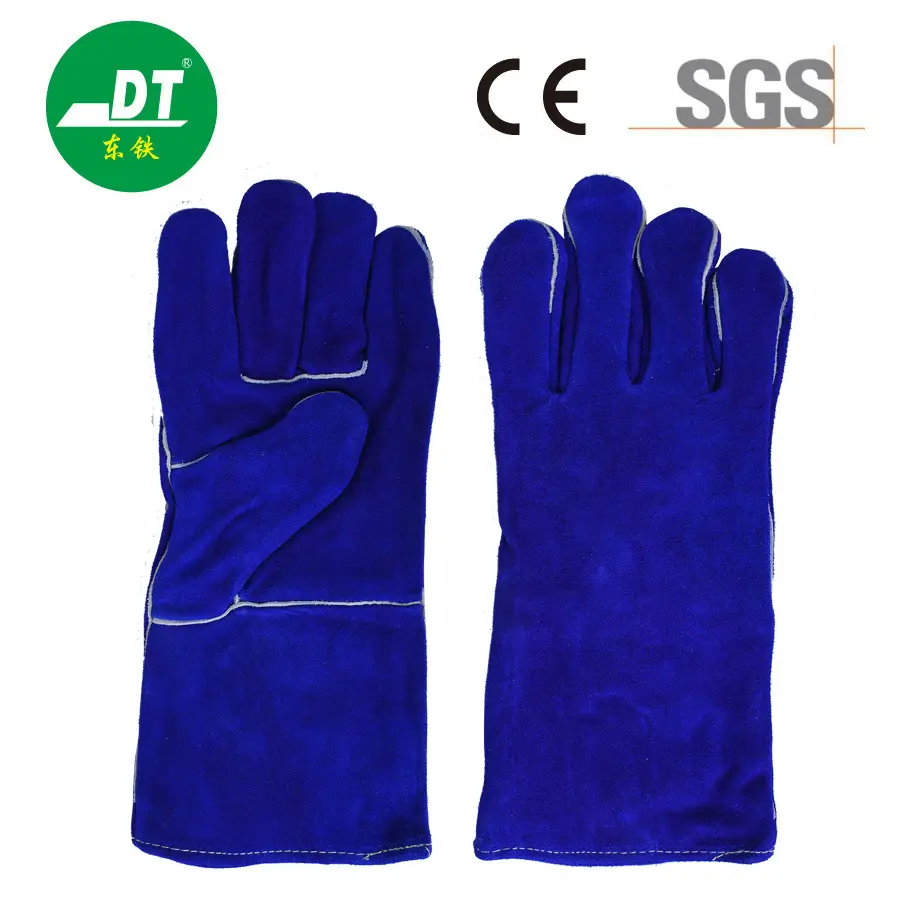The Ultimate Guide to Welding Gloves: Protecting Your Hands with the Right Kind of Glove
Choosing the right welding glove is crucial for safety and efficiency in any welding task, from intricate TIG welding to heavy-duty stick welding. These specialized gloves protect not just from the intense heat and sparks, but also potential electrical hazards. Understanding the different materials, designs like the gauntlet cuff, and features like heat resistance is key to selecting the kind of gloves that offer optimal hand protection. This guide dives deep into everything you need to know about welding gloves, exploring why they are essential personal protective equipment (PPE), how different types like leather welding gloves compare, and what factors to consider, ensuring you make an informed decision for your specific welding applications or your inventory if you're a distributor like Mark Thompson seeking reliable suppliers. Read on to ensure you or your customers keep your hands safe and productive.
Why Are Welding Gloves Absolutely Essential PPE?
Welding is a process inherently filled with hazards. You're dealing with high heat, molten metal when welding, flying sparks and spatter, and intense ultraviolet (UV) radiation from the arc. Without proper hand protection, a welder risks severe burns, cuts from sharp edges, and long-term skin damage. Welding gloves are specifically designed to protect the hands and forearms from these immediate dangers. They form a critical barrier, absorbing heat and deflecting molten metal. Think of them as the first line of defense in your personal protective equipment arsenal.
Beyond heat and sparks, the welding arc emits strong UV radiation, similar to intense sunlight. Prolonged exposure can cause "welder's flash" or arc eye, and skin burns akin to severe sunburn. A good welding glove, especially those with a longer cuff, shields the skin on the hands and lower arms from this radiation. Furthermore, handling rough materials and metal components during setup and finishing exposes hands to risks of cuts and abrasion. The durable materials gloves are made from provide essential mechanical protection, extending the lifespan of the glove and safeguarding the welder. Using the correct protective gloves isn't just a recommendation; it's often a regulatory requirement for workplace safety.

What Materials Are Welding Gloves Typically Made From?
Welding gloves are typically made from durable, heat-resistant materials capable of withstanding the harsh conditions of welding. Leather is the most common material due to its natural durability, heat resistance, and flexibility. Different types of leather offer varying balances of protection, dexterity, and cost:
- Cowhide: Widely used due to its availability, durability, and cost-effectiveness. Split leather cowhide (from the lower layers) is tough and offers excellent heat resistance, making it ideal for stick welding and MIG welding where sparks and spatter are abundant. Top grain cowhide (from the outer layer) is smoother, offers better dexterity, and is often used for TIG welding gloves.
- Deerskin: Softer and more flexible than cowhide, providing superior dexterity while still being heat-resistant. Often preferred for TIG welding.
- Goatskin: Known for its excellent tensile strength and dexterity, making it another popular choice for TIG welding gloves where fine motor control is needed.
- Pigskin: Offers good abrasion resistance and tends to stay soft even after getting wet.
- Sheepskin: Used primarily for TIG welding gloves due to its exceptional softness and dexterity.
Beyond leather, other materials are incorporated for enhanced protection or specific properties. Kevlar thread is frequently used for stitching because it's incredibly strong and heat-resistant, preventing seams from failing under stress or high temperatures (Kevlar stitching). Linings made of cotton, wool, or fiberglass can provide additional insulation and comfort. For extremely high heat applications, aluminized materials might be used on the back of the glove to reflect radiant heat, and specialized fabrics like aramid fibers offer superior flame and cut resistance. The choice of material significantly impacts the glove's performance in specific welding applications.
How Do Different Welding Processes Influence Glove Selection?
The type of welding process significantly dictates the kind of gloves needed, primarily due to varying levels of heat, spatter, and required dexterity. Selecting the appropriate welding glove ensures both safety and the ability to perform the kind of work effectively.
- Stick Welding (SMAW): This process generates intense heat, significant sparks and spatter. Therefore, stick welding gloves must prioritize heavy-duty protection. They are typically made from thick split leather (like cowhide) and often feature a full lining for extra insulation. A long gauntlet cuff is essential to protect the forearm. Dexterity is less critical than robust protection in stick welding.
- MIG Welding (GMAW): MIG welding also produces considerable heat and spatter, though often less intense than stick welding. Gloves for MIG usually offer a balance between heat resistance and dexterity. Medium-thickness leather (split leather or top grain) is common. Like stick welding gloves, they usually have a substantial cuff.
- TIG Welding (GTAW): TIG welding is a precision process requiring high dexterity for feeding the filler rod and manipulating the torch. It produces lower heat and minimal spatter compared to Stick or MIG. Consequently, TIG welding gloves are thinner, often made from supple materials like goatskin, sheepskin, or top grain deerskin. They typically have a shorter cuff and are unlined to maximize feel and control. Using these gloves allows for the fine motor skills needed.
Understanding these differences is crucial. Using a thick stick welding glove for TIG welding would make precise control nearly impossible. Conversely, using a thin TIG glove for stick welding offers inadequate protection against the high heat and spatter, leading to potential burns. Always match the glove to the specific welding procedures being performed.

What Makes Leather Welding Gloves a Go-To Choice?
Leather welding gloves remain the industry standard for several compelling reasons. Leather, particularly cowhide, offers a natural combination of toughness, abrasion resistance, and heat resistance that is hard to match synthetically at a comparable cost. Its fibrous structure effectively dissipates heat and resists punctures, crucial when handling hot metal or dealing with sparks and spatter. The inherent durability means a leather glove can withstand the rigors of daily use in demanding environments, offering a good lifespan for the investment.
Furthermore, leather molds to the wearer's hand over time, enhancing comfort and fit – a significant factor for a welder wearing gloves for extended periods. While different leathers offer varying levels of dexterity, even thicker split leather provides reasonable flexibility for most MIG and stick welding tasks. For precision work like TIG welding, thinner leathers like goatskin provide exceptional feel and control. This versatility across different leather types allows manufacturers like us at DTLabor to produce a glove optimized for nearly every welding application. Check out our durable 14'' Red Color Cowhide Welding Gloves for a classic example of reliable protection. The natural properties of leather make it an enduringly popular choice for hand protection in welding.
Can Welding Gloves Protect Against Electric Shock?
This is a critical point: standard leather welding gloves are NOT designed for primary protection against electric shock or electrical hazards. While dry leather offers some insulation, it should never be relied upon as the sole protection when there's a risk of contacting electrically live parts. Welding involves electricity, sometimes at high amperages, creating potential electrical exposure. The primary function of a typical welding glove is protection against heat, sparks, molten metal, and UV radiation.
For tasks involving a significant risk of electrical shock, such as working on or near live circuits or performing certain types of electrical work related to the welding setup, specialized insulating gloves rated for the specific maximum voltage must be used. These gloves are made from materials like rubber or latex and are classified by their voltage protection level (e.g., Class 00, Class 0, Class 1, etc., rated for a specific volt level). Often, leather protective gloves are worn over these insulating gloves to protect the rubber from physical damage like cuts and abrasion, but the leather glove itself isn't providing the primary electrical insulation. It's crucial for electrical safety to understand this distinction and use the correct PPE for electrical hazards. Never assume a standard welding glove offers sufficient protection against electric shock when working with live electrical components.

What Key Features Define High-Quality Welding Gloves?
When selecting welding gloves, several features indicate quality and suitability for the demanding task of welding. Beyond the basic material, look for these attributes:
- Heat Resistance: The primary function. The glove must withstand the specific temperatures of your welding process. Look for information on heat ratings or suitability for high heat applications. Materials like thick leather, Kevlar, and aluminized backings enhance this.
- Durability & Abrasion Resistance: Welding environments are tough. The glove needs to resist wear and tear from handling metal, tools, and rough surfaces. Reinforced palms or fingers can add longevity.
- Stitching: Seams are often weak points. High-quality welding gloves use Kevlar stitching, which won't burn or melt like cotton or nylon thread when exposed to sparks or heat. Welted seams (where a strip of leather protects the stitch) also increase durability.
- Lining: Linings (cotton, wool, fleece, fiberglass) add comfort and insulation against heat. A fully lined glove offers more protection but may reduce dexterity. Some TIG gloves are unlined for maximum feel.
- Cuff Length & Style: A longer gauntlet cuff provides crucial forearm protection from heat, sparks, and UV radiation, especially important in stick welding and MIG welding. Shorter cuffs may be acceptable for TIG welding where spatter is minimal.
- Dexterity & Fit: The glove should allow sufficient hand movement for the task. TIG welding requires high dexterity, while stick welding prioritizes protection over fine control. Gloves should fit snugly without being restrictive. Avoid "one size fits all" unless appropriate for the workforce.
- Certifications: Look for compliance with safety standards like CE (Europe) or ANSI (USA), which indicate the glove has been tested for specific protective qualities (e.g., heat, cut, abrasion resistance).
Considering these features helps ensure you're getting a welding glove that offers reliable hand protection and good value. As a manufacturer, we focus heavily on incorporating these elements, like in our 14 inch Thick Palm Welding Protective Gloves, which balance durability and protection.
Are Specific Gloves Needed for Stick Welding Applications?
Yes, absolutely. Stick welding (Shielded Metal Arc Welding or SMAW) is arguably the most demanding process in terms of heat and spatter generation. The intense heat from the arc and the constant shower of molten metal sparks necessitate gloves specifically designed for maximum protection. Standard work gloves or even lighter-duty welding gloves used for TIG or some MIG tasks are simply not adequate and can lead to serious burns.
Stick welding gloves are characterized by several key features:
- Heavy-Duty Leather: Typically made from thick split leather cowhide for superior heat resistance and durability.
- Full Lining: Often feature a cotton or wool lining to provide additional thermal insulation against the sustained heat.
- Long Gauntlet Cuff: A minimum cuff length of 4-6 inches (often longer) is standard to protect the wrist and forearm from burns and UV exposure.
- Reinforcements: May include reinforced palms, thumbs, or fingers to withstand the high wear and abrasion common in stick welding environments.
- Kevlar Stitching: Essential to prevent seams from failing under high heat and sparks.
While these features make stick welding gloves less dexterous than TIG gloves, this trade-off is necessary for safety. The primary goal is to protect the hands and arms from the significant hazards of the process. Using these gloves provides the confidence that your hand protection is up to the task. Investing in a quality pair of stick welding gloves is non-negotiable for anyone performing this type of welding.
How Important is the Cuff Style (e.g., Gauntlet Cuff) on a Welding Glove?
The cuff style and length are extremely important features of a welding glove, playing a vital role in overall protection. The most common style for MIG and stick welding gloves is the gauntlet cuff. This is an extended cuff, typically ranging from 4 to 8 inches or even longer, designed to cover the wrist and extend up the forearm, overlapping the sleeve of the welding jacket or protective clothing.
The importance of the gauntlet cuff lies in several protective functions:
- Spatter Protection: It prevents sparks and spatter from falling onto the wrist or going down inside the glove or sleeve, which could cause severe burns.
- Heat Shielding: It provides additional thermal protection to the wrist and forearm, areas often exposed to radiant heat from the weld.
- UV Radiation Blocking: The welding arc emits intense UV rays. The gauntlet cuff shields the sensitive skin of the forearm from this radiation, preventing burns similar to sunburn.
- Abrasion Resistance: It offers mechanical protection against scrapes and cuts when resting the arm or brushing against rough surfaces during welding procedures.
While TIG welding gloves often have shorter cuffs due to the lower spatter and heat involved and the need for wrist flexibility, for most other welding applications, especially overhead or heavy-duty work, the gauntlet cuff is a critical safety feature. Gloves allow for better protection when this feature is present. Choosing a glove with an appropriate cuff length for the kind of work being done is a key part of selecting welding gloves. Our range includes various cuff lengths, like the extended protection offered by the AB Grade 24 Inches Extended Fireproof Cowhide Welding Gloves.

Selecting Welding Gloves: How to Ensure Quality and Compliance from Suppliers?
For procurement officers like Mark Thompson, ensuring the welding gloves sourced meet quality standards and compliance requirements is paramount. Here’s how to approach this when dealing with suppliers, drawing from my experience as Allen at DTLabor, a welding glove factory in China exporting globally:
- Request Detailed Specifications: Don't rely on vague descriptions. Ask for precise details on materials (type of leather, thickness, split leather vs. top grain), lining materials, stitch type (Kevlar?), cuff length, and any reinforcement features.
- Verify Certifications: Ask for proof of compliance with relevant safety standards (e.g., CE EN 388 for mechanical risks, EN 407 for thermal risks, ANSI/ISEA standards). Reputable manufacturers should readily provide documentation or certification numbers. This addresses concerns about safety compliance.
- Inquire About Quality Control (QC): Understand the supplier's QC processes. How do they inspect raw materials? What checks are done during production (e.g., stitch integrity, sizing consistency)? What is the final inspection procedure before shipment? Consistent QC minimizes the risk of receiving batches with quality inconsistencies – a common pain point.
- Request Samples: Before placing a large order, obtain samples of the welding gloves you intend to purchase. Evaluate the materials, construction quality, comfort, fit, and dexterity firsthand. Test them under relevant conditions if possible (simulated heat, abrasion).
- Discuss Logistics and Lead Times: Clear communication regarding production lead times, shipping options, and estimated delivery dates is crucial. Address potential delays proactively to avoid stock shortages. Reliable logistics is key for distributors.
- Payment Terms: Understand and agree on payment methods and terms clearly beforehand.
- Build a Relationship: Open communication and a good working relationship with your supplier contact can help resolve issues more efficiently if they arise. As a factory representative, I prioritize clear communication to avoid the frustrations Mark sometimes faces.
By taking these steps, buyers can significantly increase their confidence in the quality and reliability of the protective gloves they source, ensuring the hand protection provided to end-users is dependable. We pride ourselves on transparency and quality, understanding these are critical for our B2B partners.

TIG vs. MIG vs. Stick Welding Gloves: What Are the Crucial Differences?
While all welding gloves aim to protect the hands, the specific design varies significantly based on the welding process. Understanding these differences is key to choosing the right glove for safety and performance. Here’s a table summarizing the main distinctions:
| Feature | TIG Welding Gloves | MIG Welding Gloves | Stick Welding Gloves |
|---|---|---|---|
| Primary Need | High Dexterity, Good Feel | Balance: Protection & Dexterity | Maximum Heat Resistance & Durability |
| Material | Thin, supple leather (Goatskin, Sheepskin, Deerskin Top Grain) | Medium-thick leather (Cowhide - Top Grain or Split) | Thick, durable Split Leather (Cowhide) |
| Lining | Usually Unlined | Often Lined (Cotton/Fleece) | Typically Fully Lined (Cotton/Wool) |
| Cuff Style | Shorter, Snug Cuff | Gauntlet Cuff (Medium Length) | Long Gauntlet Cuff |
| Thickness | Thin | Medium | Thick |
| Spatter Level | Minimal | Moderate | High |
| Heat Level | Lower | Moderate to High | High to Intense Heat |
| Typical Use | Precision work, thin materials | General fabrication, automotive | Heavy fabrication, structural, outdoor |
In essence:
- TIG welding gloves prioritize feel and control, sacrificing some heat protection for dexterity.
- Stick welding gloves prioritize maximum protection from high heat and heavy spatter, sacrificing dexterity.
- MIG welding gloves strike a balance, offering moderate protection suitable for the heat and spatter levels common in MIG, while retaining reasonable dexterity.
Using the wrong kind of gloves can compromise safety (e.g., thin TIG glove for stick welding) or hinder performance (e.g., thick stick glove for TIG). Always select the glove specifically designed for the type of welding being performed to ensure optimal hand protection and efficiency.
Key Takeaways for Selecting Welding Gloves:
- Protection First: Welding gloves are essential PPE to guard against heat, sparks, molten metal, UV radiation, cuts, and abrasion.
- Material Matters: Leather (especially cowhide) is common. Split leather offers durability and heat resistance (Stick/MIG), while top grain or thinner leathers (Goatskin) provide dexterity (TIG).
- Match the Process: Choose gloves based on the welding type: thick, heavily insulated stick welding gloves; balanced MIG gloves; thin, dexterous TIG welding gloves.
- Look for Quality Features: Prioritize heat resistance, durability, Kevlar stitching, appropriate lining, and a suitable cuff (often a gauntlet cuff).
- Electrical Hazard Awareness: Standard welding gloves do NOT provide primary electric shock protection. Use rated insulating gloves for electrical work or high-risk electrical exposure.
- Supplier Verification: For B2B purchasing, verify specifications, request certifications (CE/ANSI), inquire about QC, get samples, and ensure clear communication on logistics and terms.
- Cuff Importance: The gauntlet cuff is vital for protecting the wrist and forearm in MIG and Stick welding.
Choosing the right welding glove is a critical safety decision. By understanding the materials, features, and process-specific requirements, you can ensure you or your workers have the best possible hand protection for the job.






